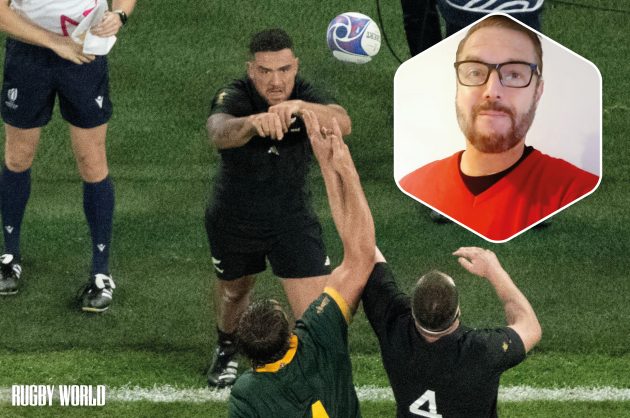Share the load of throwing, argues our columnist
In the modern game, hookers are the only ones that throw the ball into the lineout. Like Harry Potter, and often with as much scarring on the forehead, they are the truly ordained ones when it comes to supplying the lineout.
But if you’re a decrepit old man like the author of this column, and you’ve watched rugby from the mid-Eighties onwards, then you’ll be aware that other positions were once able to plant their fee on the touchline and chuck. Before the game went pro, and specialisation became a necessity, wings and scrum-halves frequently ‘threw-in’ – especially in France.
The variation in the throw-in didn’t just apply to the position of the players who were allowed to execute it. The type of throw also varied. The overhead ‘spiral’ throw that we’re all familiar with, was once second to the over-the-shoulder throw, which was essentially the Kareem Abdul Jabbar ‘Sky Hook’ of rugby.
All of that was of course a long time ago and now hookers throw unopposed. But why? In a game where forwards kick, backs jackal, props carry, and locks play second-receiver, the hooker being the only one who is allowed to throw seems a bit trade union-y.
The recent Rugby World Cup was the most blurred tournament ever played when it comes to player roles. A 6:2 split has become the norm and the 7:1 split no longer makes people feel as queasy as watching Nigel Farage on I’m A Celeb. Kwagga Smith was touted as being able to play virtually every position on the field. And if you’ve ever seen Francke Horn play for the Lions, you’ll on occasion be unsure if he’s playing eight or ten. Yet only two players in a squad of 23 can throw a ball 15 feet into a lineout? It doesn’t make sense.
The benefits of spreading the throwing load over many positions are obvious. Having only one player on the field (and one on the bench) who can throw, creates massive amounts of pressure on a limited number of players. It’s a similar situation which faces goal-kickers. Except that goal-kickers always have at least another kicking option on the field, should everything go wrong. Most teams have a number one kicker on the pitch and another who can mix it up should it be required – usually an option who can take longer kicks at goal.
The hooker doesn’t have that luxury. They either succeed or get the Pollice verso.

Ireland hookers throw in training (Getty Images)
It seems unusual that the hooker should be best option in the first place, given that they are the only players on the field who spend fast periods of the game hanging off both arms in a scrum. The force involved in scrummaging at hooker puts enormous pressure on the shoulders and arms, yet in an instant they’re often expected to hit a precise target 15 feet in the air. It’s doubtful that military snipers undergo a similar routine by being ordered to do 75 press-ups, then have a crack with the rifle.
Then there’s the other issue with hookers throwing. They’re often very muscle bound. It always seems weird when you see a hooker, with biceps reminiscent of a python swallowing a Capybara, throwing in the ball. Getting massive biceps to pass smoothly past a hooker’s ears, and 42-inch neck, doesn’t seem like the most aerodynamic route to a smooth throw.
Hookers throw – why not props?
Even if you regard throwing into a lineout as a job primarily for front-row types, why aren’t the props also involved? Why can’t all three front row forwards be skilled in that department and effectively reduce the need for a ‘specialist hooker’? Instead, having a set of a scrummaging ball carrying monsters, who can all throw at the lineout.
But why stop at just the front-row throwing in? There was a time when locks were the only jumpers in a lineout. Now, they’re often used to lift lighter players to a greater height, especially at the tail of the lineout. So why can’t their height be utilised occasionally when throwing in? A 6ft 8in lock with arms longer than a Covid enquiry would almost be throwing the ball on a downward trajectory into some lineouts. There would be less arcing/looping of the ball’s flight, which would present a very different proposition for the opposition’s defence.
It is often stated that the adjustment to training schedules would be extreme if you had too many players practicing throwing in. But that doesn’t really add up. All the forwards must know the lineout calls by default; the only additional workload is learning to hit the mark.
In the elite game, multiple players having the skillset to throw at the lineout seems like a logical next step. It not only gives multiple options on the field, but it also makes players (especially props) far more appealing in the recruitment market. And in an age where player budgets are shrinking in numerous leagues, the more versatile a player the better.
As with all ideas in rugby, when it comes to innovation, let’s not throw it out before we’ve even thrown it in.
Download the digital edition of Rugby World straight to your tablet or subscribe to the print edition to get the magazine delivered to your door.





